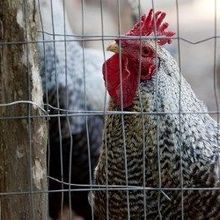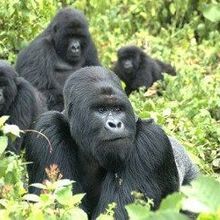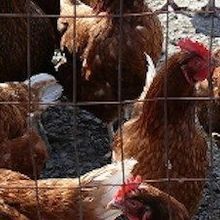avian influenza

Deciphering the Unusual Pattern of Bird Flu Symptoms in Cows
Danielle Gerhard, PhD | May 15, 2024 | 6 min read
The distribution of flu virus receptors in cow mammary glands helps explain the high H5N1 viral loads in milk, but it also raises concerns about risks to human health.

Unprecedented Avian Flu Epidemic Could Presage Year-Round Outbreaks
Christie Wilcox, PhD | Oct 4, 2022 | 2 min read
Nearly 50 million birds have been culled amid efforts to mitigate the spread of the virus, which continues to ravage the Northern Hemisphere.

Ten Minute Sabbatical
Emily Cox and Henry Rathvon | Jun 1, 2022 | 5 min read
Take a break from the bench to puzzle and peruse

Bird Flu Hits US Hard
Natalia Mesa, PhD | Apr 8, 2022 | 3 min read
So far this season, tens of millions of birds have died of disease or been culled, driving up prices of eggs, chicken, and turkey meat.

Avian Flu Case Numbers Soar in Europe
Chloe Tenn | Jan 7, 2022 | 6 min read
The Scientist spoke with the UK’s chief veterinary officer, Christine Middlemiss, about this winter’s high bird flu prevalence, the effects of the disease, and efforts to combat it.

The Long Journey to Resolve the Origins of a Previous Pandemic
Martha Nelson | Sep 2, 2021 | 10+ min read
Dozens of researchers, including myself, worked for years to uncover that swine flu had leapt to humans from a pig in Mexico in 2009. We learned a lot about influenza evolution, pig farming, and outbreak risk along the way.

Bird Flu Viruses Can Remain Infectious for Months in US Wetlands
Catherine Offord | Sep 10, 2020 | 4 min read
Lab and field experiments indicate that aquatic environments could act as reservoirs for the pathogens, which typically do not represent a direct risk to humans.

Swine Flu Strain Has Pandemic Potential: Study
Jef Akst | Jun 30, 2020 | 3 min read
An influenza virus identified in pigs in China has a concerning mix of genes, but experts say there is no way to know if it will evolve to be transmissible between humans.

Cause of Viral Pneumonia Outbreak in China Unknown
Catherine Offord | Jan 6, 2020 | 2 min read
Health authorities have ruled out the usual suspects, leading to fears that a novel virus is causing the infections in Hubei Province.

First Human Case of H7N4 Bird Flu Confirmed
Shawna Williams | Feb 15, 2018 | 1 min read
The woman, a resident of southeast China, has since recovered.

Genome Digest
Jenny Rood | Apr 16, 2015 | 6 min read
What researchers are learning as they sequence, map, and decode species’ genomes

Unraveling H7N9’s History
Kate Yandell | Dec 30, 2014 | 3 min read
An analysis of stored samples shows that H7N9 precursor H9N2, a virus widespread in chickens, has shown increased fitness in recent years.

Moratorium on Gain-of-Function Research
Jef Akst | Oct 21, 2014 | 2 min read
In the wake of a handful of biosafety lapses at federal research facilities, the US government is temporarily halting funding for new studies aiming to give novel functions to influenza, SARS, and MERS viruses.

Haste Caused CDC Bird Flu Contamination?
Jef Akst | Aug 19, 2014 | 1 min read
The Centers for Disease Control and Prevention scientist who accidentally leaked H5N1 into a benign strain of avian influenza may have been rushing off to a meeting.

New Bird Flu Found in Penguins
Kerry Grens | May 6, 2014 | 1 min read
Scientists have identified for the first time an avian influenza that infects penguins.

Not Swine Flu
Abby Olena, PhD | Feb 17, 2014 | 1 min read
The strain of influenza that caused the 1918 pandemic probably came from birds, a study shows.

New Bird Flu Threat?
Abby Olena, PhD | Feb 4, 2014 | 2 min read
Chinese officials report the first two human cases of H10N8 avian influenza, one of which is linked to the death of a 73-year-old woman.

Person-to-Person H7N9?
Abby Olena, PhD | Jan 20, 2014 | 1 min read
The death of a medical worker in China prompts worries that the virus can spread between humans.

Opinion: The Fatality Burden
Lynn Klotz and Edward Sylvester | Dec 17, 2013 | 4 min read
Some gain-of-function influenza research poses a significant public health threat and should be banned.
